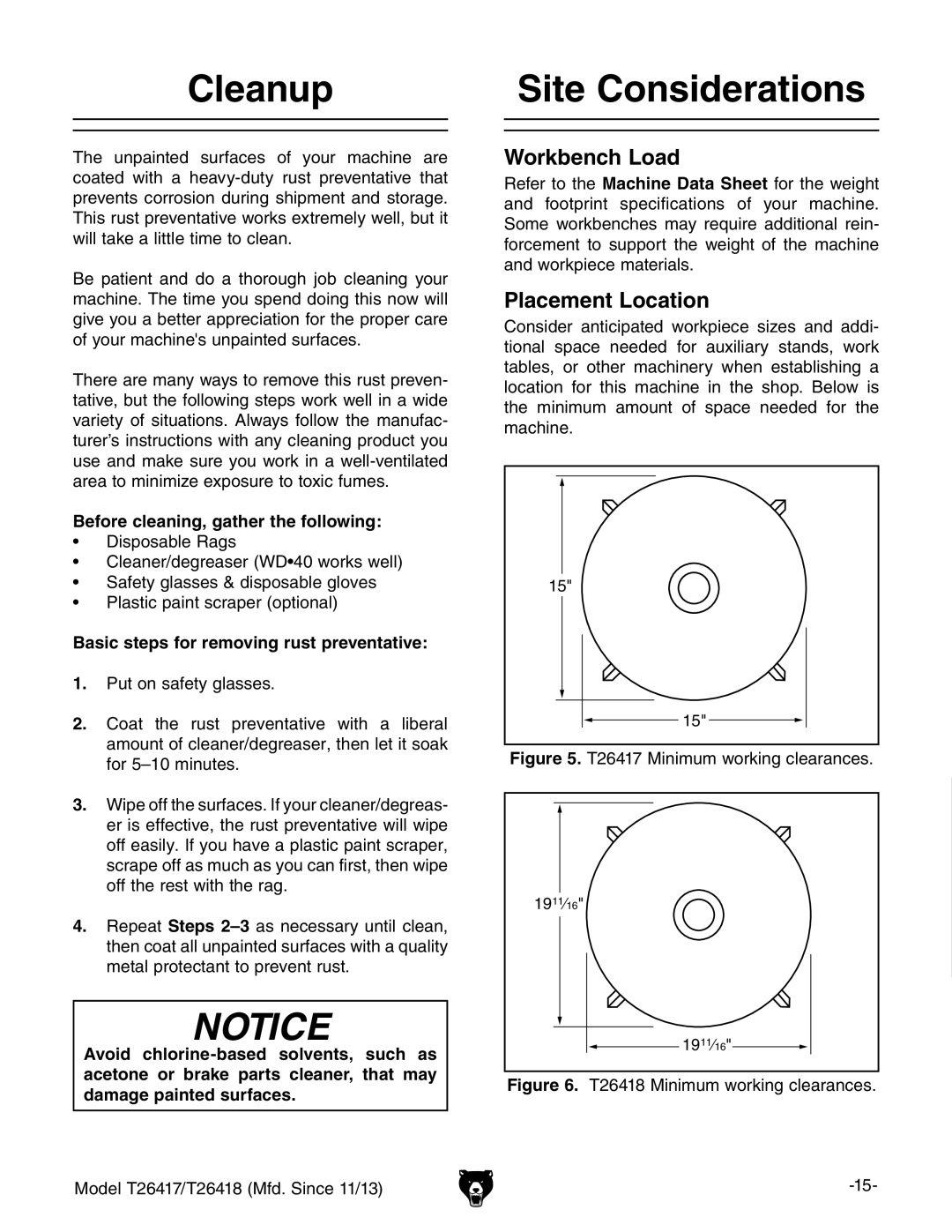
Cleanup
The unpainted surfaces of your machine are coated with a
Be patient and do a thorough job cleaning your machine. The time you spend doing this now will give you a better appreciation for the proper care of your machine's unpainted surfaces.
There are many ways to remove this rust preven- tative, but the following steps work well in a wide variety of situations. Always follow the manufac- turer’s instructions with any cleaning product you use and make sure you work in a
Before cleaning, gather the following:
•Disposable Rags
•Cleaner/degreaser (WD•40 works well)
•Safety glasses & disposable gloves
•Plastic paint scraper (optional)
Basic steps for removing rust preventative:
1.Put on safety glasses.
2.Coat the rust preventative with a liberal amount of cleaner/degreaser, then let it soak for
3.Wipe off the surfaces. If your cleaner/degreas- er is effective, the rust preventative will wipe off easily. If you have a plastic paint scraper, scrape off as much as you can first, then wipe off the rest with the rag.
4.Repeat Steps
NOTICE
Avoid
Model T26417/T26418 (Mfd. Since 11/13)
Site Considerations
Workbench Load
Refer to the Machine Data Sheet for the weight and footprint specifications of your machine. Some workbenches may require additional rein- forcement to support the weight of the machine and workpiece materials.
Placement Location
Consider anticipated workpiece sizes and addi- tional space needed for auxiliary stands, work tables, or other machinery when establishing a location for this machine in the shop. Below is the minimum amount of space needed for the machine.
15"
15"
Figure 5. T26417 Minimum working clearances.
1911⁄16"
1911⁄16"
